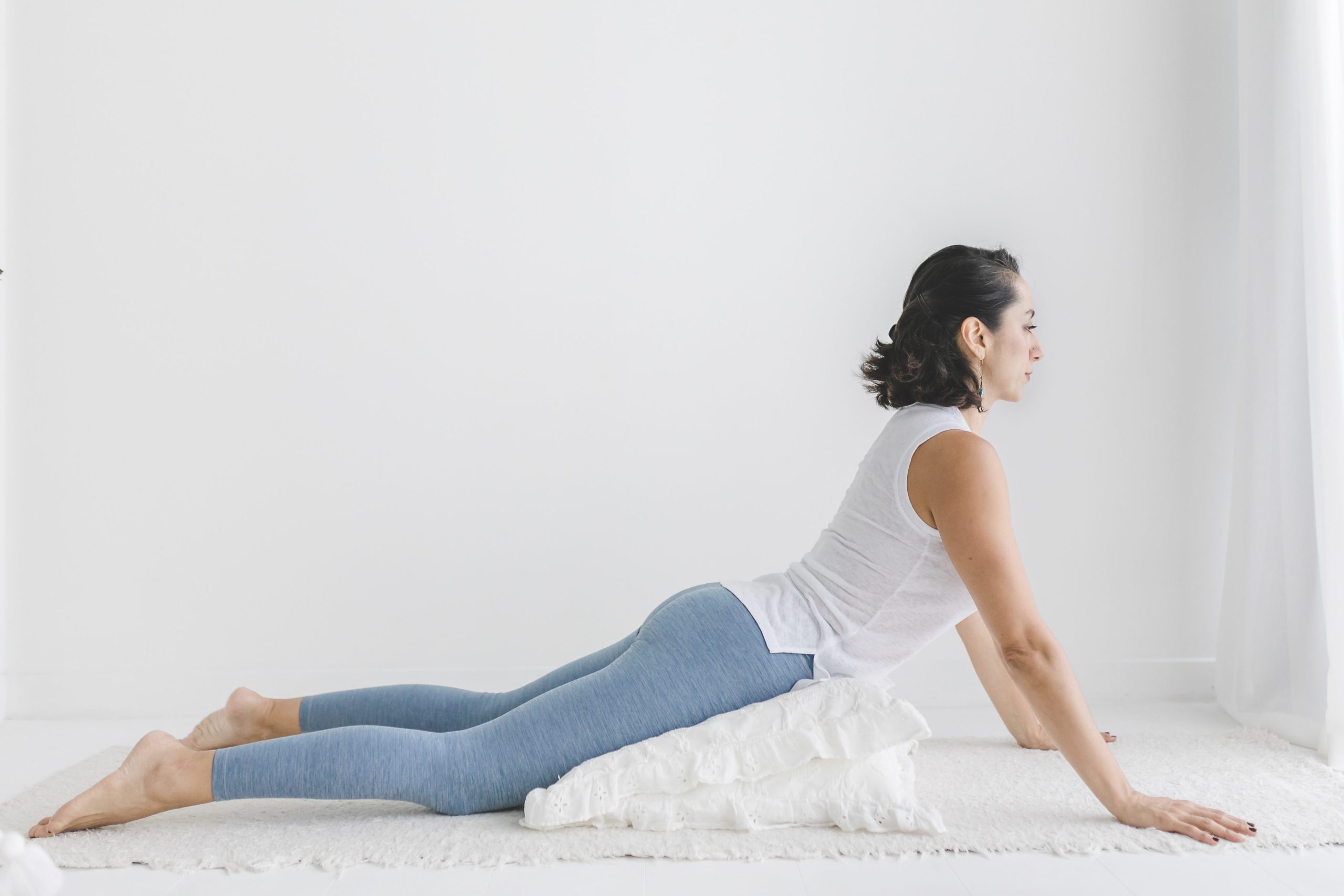What is The Difference Between Yin Yoga and Restorative Yoga?

Similar in their slow-paced style of practice, yin yoga and restorative yoga have their share of differences. Both practices have become popular in recent years, and are practiced holding postures for a few minutes with gentle transitions and sometimes using props. However, the approach and impact of both practices are different. Let’s look at what is the difference between yin yoga and restorative yoga in greater detail.
- Active vs. passive stretch: In yin yoga, there is an active stretch taking place, whereas restorative yoga is passive with each stretch supported by props. What this means is in yin yoga, you are actively finding boundaries to reach a place of comfort. Only the right amount of pressure must be applied, which a certified yin yoga teacher will be able to explain correctly to students. In restorative yoga, you are only moving into a relaxed posture to give your mind and body some rest. It works towards releasing tension passively and not with an active stretch.
Take a look at these common questions about yin yoga.
- Focus and target areas: When comparing yin yoga vs restorative yoga, one of the most important differences is the target areas. In yin yoga specific regions are targeted depending on the posture. For example, in the Butterfly Pose, the hip region is targeted. Furthermore, it is the deep connective tissues that get stretched and strengthened. This includes the fascia, ligaments, bones, etc. Tissue elasticity improves as well as joint mobility (read more about the benefits of yin yoga here). In restorative yoga, on the other hand, the focus is on releasing tension and stress, and thus activating the parasympathetic nervous system.
- The purpose of props: Both styles of yoga encourage the use of props. However, in a yin yoga class teachers often use props so students can deepen a posture or to help them ease into the posture. Props are also used to ensure there is no excessive strain on the connective tissue. In fact, in a yin yoga teacher training program you will learn in detail how to assist students in using props to deepen specific postures. In restorative yoga, props are used to support the body so you can relax more. With the help of props, you can support the posture to trigger the body’s healing and relaxation mechanism. In both styles of yoga, props include chairs, bolsters, blocks, straps, cushions, blankets and more.
- Roots and origin: Yin yoga has its origins in the Taoist philosophy. The name ‘yin’ comes from the yin-yang philosophy which means to balance the opposites. Other dynamic styles of yoga like Vinyasa and Ashtanga are known as yang and they focus more on the muscles. Restorative yoga, on the other hand, developed by BKS Iyengar as yoga therapy, has become popular in yoga therapy over the last few years. It is used in yoga therapy as a form of healing for those recovering from an illness or injury, in yoga for women looking to relax during their menstrual cycle, yoga for seniors, or anyone simply looking to restore and relax.
- Impact and benefits: In yin yoga, postures are held from 3-5 minutes or more. This allows practitioners to leave their comfort zone and enter a place of stillness. Deep connective tissue is less elastic than muscular tissue, so in order to work on these areas, a longer hold is required. This also encourages a better release of tension. Benefits include improved flexibility and mobility and better joint health. Memories and sensations of trauma, tensions and emotions are stored in the connective tissue, and in the nervous system, through long-holds this trapped memory can be released so the body learns to feel differently. Blood circulation and oxygen supply to the deep connective tissue increases. Mindfulness greatly improves as well. Blocked energy is released, infusing the body with vitality. In restorative yoga, practitioners can hold poses for a longer duration, however, it all within one’s comfort zone and the benefits are purely of rest, relaxation and balancing the nervous system. It activates the parasympathetic nervous system, which prompts our rest and digest response. This immediately induces a state of balance and calm. It even helps boost the functioning of the immune system as your system will be more relaxed, healthy and happy. Blood circulation and oxygen supply in the body increases and detoxification takes place.
Why is yin yoga the ‘Next Big Thing’ in yoga? Read more here.
- Goal of the practice: Yin yoga is perfect for anyone looking to increase flexibility and mobility, improve the health of joints, ligaments, bones, etc., correct one’s posture and release stress and emotions’ memory. It is great if you’re looking to balance yin and yang practices. That is, if you are someone who regularly does dynamic workouts like running or Ashtanga yoga, then a yin yoga class will bring you the perfect balance. Restorative yoga is perfect if you are looking to relax and release tension. Restorative yoga is a great practice to turn to for healing, stress release, relaxation and creating a sense of safety in the mind and body.
- Yin yoga should be practiced following the same precautions of other styles of yoga: Unlike restorative yoga which can be practiced as a healing therapy, yin yoga should be practiced observing the same cautions you will take if practicing a more dynamic style. Beginners can practice, however, the postures and the long-holds can be intense. It requires strength, willpower and patience to achieve the posture and hold still. Yin yoga may have some contraindications and dos and don’ts which, as teachers, you must be able to convey to your students. So, it is highly recommended to avoid practicing it when recovering or healing from an injury or illness.
- How it feels: Yin yoga may feel uncomfortable at first. Once you get past this point, you will find comfort in the posture. When you reach this point, the idea is to stay still. Your alignment and how the posture looks might be different, but a good yin yoga teacher trained with a functional approach to postures will be able to guide you into how/where the posture must feel. In restorative yoga there is only comfort. You can take the support of props or modify your pose, but the idea is to always be comfortable and not to push your body out of its comfort zone.
Yin yoga and restorative yoga both activate the parasympathetic nervous system, release stress and induce a sense of calm. They both can work on targeted areas through different postures while also having an overall positive impact on the entire system. However, they both do all of this at different levels. Yin yoga is all about stretching, compressing, and applying gentle stress on the deep tissues, while restorative yoga is all about supporting the body and allowing it to relax and restore. To learn about the impactful benefits of yin yoga, we recommend joining an online yin yoga TTC like Sampoorna Yoga’s 50-Hour Yin Yoga Teacher Training Program.
Contact us if you are interested in learning more about the healing benefits of yin yoga or discovering how you can make it part of your lifestyle. At Sampoorna Yoga Online Academy, you will find specialized help focusing on your well-being, no matter where you are.


